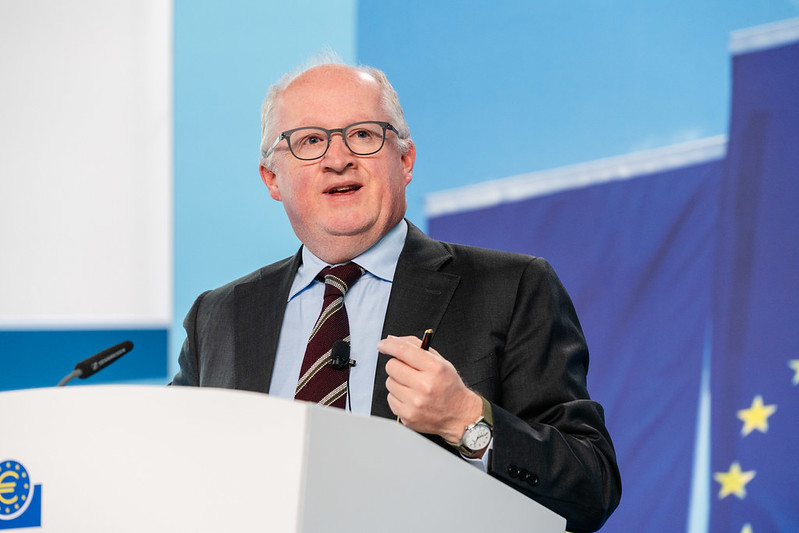ECB’s Lane: June Cut Ensures Projected 2026 Inflation Undershoot Remains Temporary
11 June 2025

By Marta Vilar – MADRID (Econostream) – European Central Bank Chief Economist Philip Lane said on Wednesday that the ECB had decided to cut its interest rates on June 5 to prevent the expected undershooting of inflation in 2026 from becoming entrenched.
In a speech at the Government Borrowers Forum 2025 in Dublin, Lane said that the ‘June projections were conditioned on a rate path that included a quarter-point reduction of the DFR in June.’
Model simulations and monetary policy feedback rules suggested lowering rates was ‘appropriate’ and a ‘robust’ decision, according to Lane, who said this appropriateness was seen under the baseline but also in a range of alternative scenarios for inflation and economic growth.
‘By supporting the pricing pressure needed to generate target-consistent inflation in the medium-term, this cut helps ensure that the projected negative inflation deviation over the next eighteen months remains temporary and does not convert into a longer-term deviation of inflation from the target’, he said.
The decision to lower rates was also a response to the uncertainty that might appear around the ECB’s reaction function, he said, as the institution is determined to ensure that inflation remains at 2% in the medium term.
‘This helps to underpin inflation expectations and avoid an unwarranted tightening in financial conditions’, he said.
The stability seen in the euro bond market demonstrated the strong anchoring of inflation expectations at 2% and the confidence in the stability of the euro area business cycle, he said.
Lane, who said that the stock of European common debt was too small to foster liquidity and risk management services it needed to become a safe asset, explained how Europe could expand this stock.
‘Just as the Next Generation EU (NGEU) programme was financed by the issuance of common bonds jointly backed by the member states, the member countries could decide to finance investment European-wide public goods through more common debt’, he said.
Markets would also expect an increase in the amount of Eurobonds available if Europe announced a multi-year investment programme, he said.
Lane endorsed the proposal of blue-bond issuances, the proceeds of which would be used to buy back a given amount of national bonds of each member state, he said.
‘While this type of financial reform was originally proposed during the euro area sovereign debt crisis, the conditions today are far more favourable, especially if the scale of blue bond issuance were to be calibrated in a prudent manner in order to mitigate some of the identified concerns’, he said.
Related articles:
- ECB’s Lane: ‘New Challenges Are Emerging’; More Easing Possible if Inflation Falls Further
- ECB’s Lane: Disinflation ‘Not Quite Done’, Services Going to Come Down
- ECB’s Lane: Alternative Scenarios on Tariffs to Be Included in June Projections
